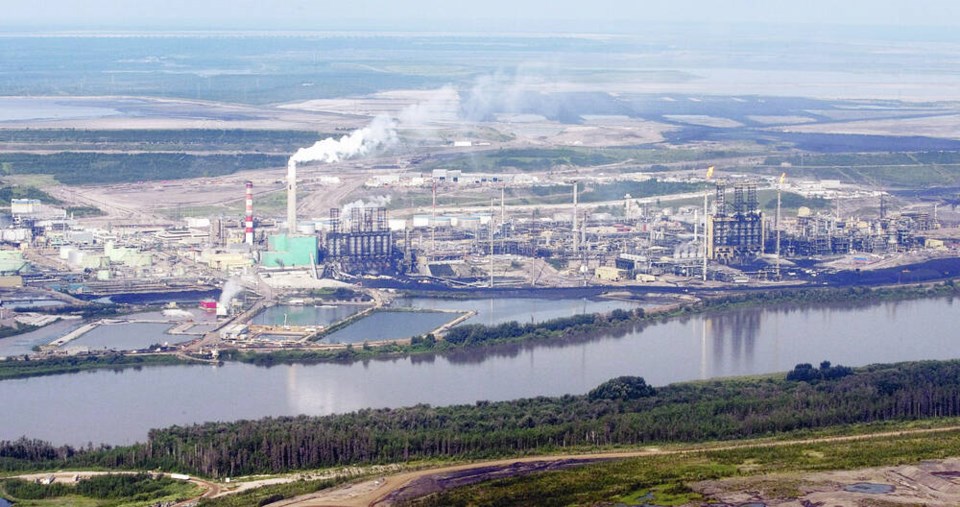sa¹úŒÊŽ«Ãœ’s new climate plan has been criticized by some as being too aggressive and by others as not being aggressive enough. But like all polarized debates, the truth lies somewhere in the middle.
The new plan outlines a pathway to achieve a 40 per cent reduction in emissions by 2030. It contains strengthened zero-emission vehicle targets of 60 per cent of new sales by 2030 and 100 per cent by 2035, and has new shorter-term targets to ensure that the plans are on track.
There is a commitment to decarbonize the electricity sector by 2035 and to reduce oil-and-gas sector emissions by 31 per cent below 2005 levels by 2030 by reducing methane emissions, ending fossil-fuel subsidies and capturing carbon emissions.
Other elements, such as increasing the carbon tax to $170 per tonne by 2030, are reiterated along with funding new programs and new regulations to reduce emissions across other sectors and ease the transition for workers to the new green economy.
sa¹úŒÊŽ«Ãœ’s past record of publishing plans and not meeting the targets is a worrisome precedent that should make Canadians justifiably wary of new plans. So how does this plan stack up?
On the positive side, this is the most comprehensive climate plan published to date and contains a set of initiatives that if fully implemented will achieve a 40 per cent reduction, which is close to the 45 per cent reduction needed to meet Paris commitments.
There is a strong case that wealthy countries like sa¹úŒÊŽ«Ãœ that have a poor record on emissions should do more, but a 40 per cent reduction would be a laudable achievement.
But there are serious gaps that need to be filled if this plan is to succeed.
One gap is in the transportation sector, which is responsible for 25 per cent of Canadian emissions. The ZEV targets are consistent with the International Energy Agency-recommended pathway to net zero. The problem is that unlike sa¹úŒÊŽ«Ãœ and Quebec, the federal plan does not include a legislated sales mandate to ensure these targets are met. One is promised, but until it is legislated, there is no guarantee.
Further, targets for the heavy-duty vehicle sector of 35 per cent by 2030 are only applied “where feasible” and are below the IEA-recommended 50 per cent target.
A second gap is in the electricity sector. The commitment to decarbonize by 2035 is consistent with the IEA net-zero plan recommendations, but there is no specific strategy outlined for achieving this and currently much of the transition involves replacing coal plants with natural gas, which can reduce emissions but will not achieve net zero.
The third gap is that there is no explicit plan showing how the 31 per cent reduction in the oil and gas sector will be achieved.
The oil and gas sector accounts for 26 per cent of emissions, and managing emissions in this sector is a priority given its economic and regional significance.
The problem is that the commitments in the new plan have been made before and there is no assurance that they will be implemented or be successful in meeting the target.
One of the key initiatives is for oil and gas is carbon capture, but the technology is still in its early stages and remains expensive and challenging.
And more concerning is the fact sa¹úŒÊŽ«Ãœ is expanding fossil-fuel subsidies by funding major fossil-fuel infrastructure projects such as the $21.4 billion to build the Trans Mountain Expansion Project based on assumptions of continued growth in fossil-fuel production.
The assumed expansion in fossil-fuel production stimulated by subsidies is contrary to the IEA net-zero plan recommendations of prohibiting development of any major new fossil-fuel projects.
Another major gap is climate adaptation. sa¹úŒÊŽ«Ãœ will still experience significant climate change consequences even if the world meets the Paris climate targets, and needs to prepare climate-adaptation plans that identify the risks and mitigate the consequences.
While some climate-adaptation planning is underway, the recent heat waves, flooding and forest fires show how ill-prepared we are for the coming changes.
A final major gap is that there is no pathway provided in the plan for achieving sa¹úŒÊŽ«Ãœ’s net-zero emission target for 2050. Without net zero, the Paris goals will not be met and time is short for developing the net-zero plan.
sa¹úŒÊŽ«Ãœ has among the poorest track records of developed countries on climate policy. We are the third-highest per-capita emitter among developed countries, and have recorded the second-lowest reduction in per-capita emissions among G7 countries.
The new plan puts sa¹úŒÊŽ«Ãœ on course for doing better, but its success depends on filling major gaps. We can be cautiously optimistic, but the new plan remains a work in progress.



